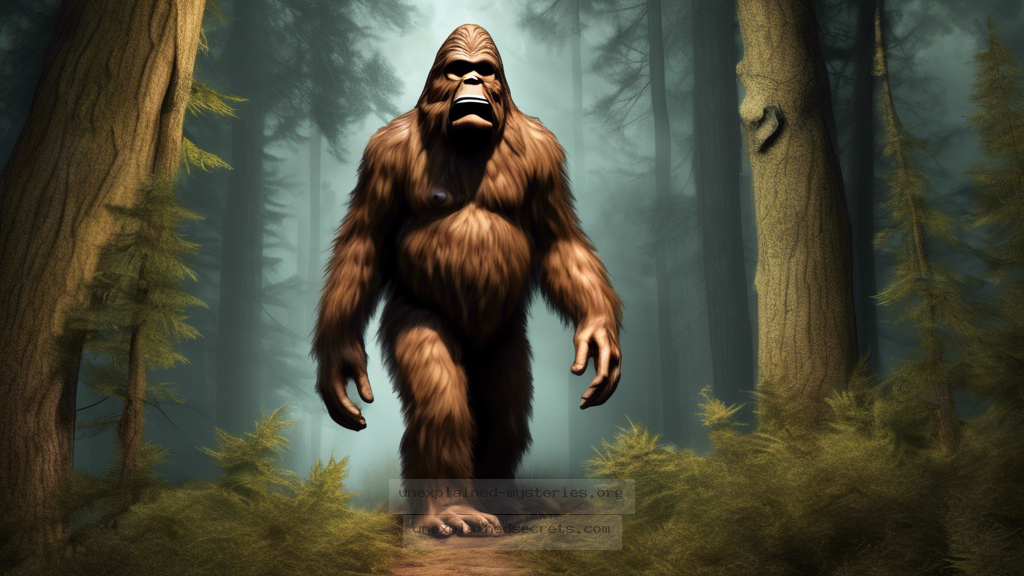What Evidence Exists for the Existence of Bigfoot, and Why Does It Remain Unexplained?
What Evidence Exists for the Existence of Bigfoot, and Why Does It Remain Unexplained?
The enigma of Bigfoot has captivated the imagination of people around the globe for decades. From eerie footprints in the wilderness to blurry photographs that claim to capture the elusive creature on film, the question remains: what evidence exists for Bigfoot, and why has it not yet been definitively proven? This inquiry is critical, as it not only explores the potential existence of a species that may have evaded human detection but also examines the cultural, scientific, and psychological implications of such a phenomenon. In this post, we will delve deeply into the evidence surrounding Bigfoot, considering historical accounts, scientific analyses, and ongoing debates within the field of cryptozoology.
Historical Context of Bigfoot Sightings
The legend of Bigfoot, often referred to as Sasquatch, has roots that extend into Native American folklore, where stories of large, hairy beings living in the forests were commonplace. The term “Sasquatch” itself originates from the Salish word “sásq’ets,” which refers to a wild man. The first widely publicized sighting occurred in 1958 when a construction worker named Jerry Crew discovered large footprints in Bluff Creek, California. This event sparked a media frenzy and led to the popularization of the Bigfoot phenomenon. Over the decades, thousands of alleged sightings have been reported across North America, particularly in the Pacific Northwest. Each of these encounters adds to the rich tapestry of Bigfoot lore, yet they also contribute to the ongoing debate about the creature’s existence.
Core Concepts and Theories Surrounding Bigfoot
Several theories attempt to explain the existence of Bigfoot. The most prevalent theory suggests that Bigfoot is a remnant population of a large primate, perhaps a descendant of Gigantopithecus, an extinct species that lived in Asia. This theory posits that if such a creature exists, it would prefer remote, dense forests where human encounters would be rare. Additionally, proponents of this theory argue that the elusive nature of Bigfoot is a survival mechanism, developed over thousands of years to avoid detection. Other theories suggest that Bigfoot could be a type of undiscovered ape or a hybrid species resulting from interbreeding between known primates.
Notable Evidence: Footprints and Hair Samples
One of the most compelling pieces of evidence for Bigfoot’s existence comes from the numerous footprint casts made over the years. These tracks, often measuring over 15 inches in length, have been analyzed by experts who argue they display characteristics inconsistent with known animals. In some cases, the footprints have dermal ridges similar to those of humans.
In addition to footprints, numerous hair samples have been collected, some of which have been subjected to DNA analysis. While many have turned out to be from known animals, a few samples remain unidentified, leading to speculation that they could belong to an unknown species. A notable example includes a 2019 study that analyzed hair samples from around North America, concluding that some did not match any known animal in the database.
Visual Evidence and Multimedia Analysis
Visual evidence, including photographs and videos, plays a significant role in the Bigfoot discourse. The Patterson-Gimlin film is often mentioned, but there are other notable instances, such as the 2000 “Bigfoot in Ohio” footage and various thermal imaging videos. Each piece of visual evidence has been subject to intense scrutiny. Experts in film analysis have pointed out the potential for hoaxes, while enthusiasts argue that many visuals capture genuine encounters. The challenge lies in the quality of the footage and the conditions under which it was recorded, often leading to grainy and inconclusive material.
Scientific Perspectives and Skepticism
Despite numerous claims and anecdotal evidence, the scientific community remains largely skeptical regarding Bigfoot’s existence. The primary argument against the creature is the lack of physical evidence, such as bones or confirmed sightings by trained wildlife experts. Furthermore, ecologists argue that a breeding population of such a large creature would require a sustainable environment, which is increasingly difficult to find in today’s fragmented ecosystems.
Alternative Perspectives: Cultural Impact and Psychological Factors
The Bigfoot phenomenon extends beyond mere biological inquiry; it embodies cultural significance and psychological dimensions. In many ways, Bigfoot serves as a modern myth, representing humanity’s fascination with the unknown and the wildness of nature. The creature has become a symbol of wilderness exploration, often evoking themes of environmentalism and the preservation of unexplored areas. Furthermore, the psychological aspects of Bigfoot sightings cannot be ignored. Many witnesses report feeling a mix of fear and awe, suggesting that encounters with Bigfoot may stem from deep-seated psychological archetypes.
Common Misconceptions and Clarifications
Several misconceptions about Bigfoot persist in popular culture. One prevalent myth is that all sightings are hoaxes or misidentifications. While many can be attributed to these factors, it is essential to consider that not every account lacks credibility.
Best Practices for Investigation and Study
For those interested in investigating Bigfoot, several best practices can enhance credibility and effectiveness. First, researchers should utilize scientific methods, such as collecting physical evidence (e.g., hair, footprints) and documenting sightings meticulously. Employing technology, such as night vision cameras and audio recorders, can also provide more substantial evidence. Collaboration with local wildlife experts and ecologists can help in understanding the habitats where sightings occur. Finally, keeping an open mind while remaining critical of the data collected will ensure a balanced approach to this fascinating mystery.
Future Developments and Ongoing Research
As technology continues to advance, so too does the potential for uncovering new evidence related to Bigfoot. Recent developments in DNA sequencing, remote sensing, and audio analysis may provide fresh insights into this cryptid’s existence. Several organizations dedicated to cryptozoology are currently undertaking field studies and expeditions, hoping to capture definitive evidence. As public interest grows, the dialogue surrounding Bigfoot will likely evolve, potentially leading to breakthroughs in understanding this elusive creature.
Conclusion: The Ever-Persistent Mystery of Bigfoot
The question of whether Bigfoot exists remains a tantalizing mystery, fueled by a blend of historical accounts, anecdotal evidence, and scientific skepticism. While the evidence collected thus far has not definitively proven Bigfoot’s existence, it continues to inspire curiosity and exploration. As we delve deeper into the wilderness and our understanding of the natural world, we may one day unlock the secrets surrounding this legendary creature. Until then, the allure of Bigfoot remains a compelling testament to humanity’s quest for understanding the unexplained.
Other Articles
Recent Posts
- What Happened to Flight MH370? The Conspiracy Theories That Still Haunt Us
- What Secrets Lurk Within the Walls of the Infamous Trans-Allegheny Lunatic Asylum?
- What Evidence Supports the Existence of Bigfoot in the Pacific Northwest?
- What Happened to the Indus Valley Civilization? Unraveling the Mysteries of Ancient Urban Life
- Can Telepathy Be Scientifically Proven Through Laboratory Evidence?







